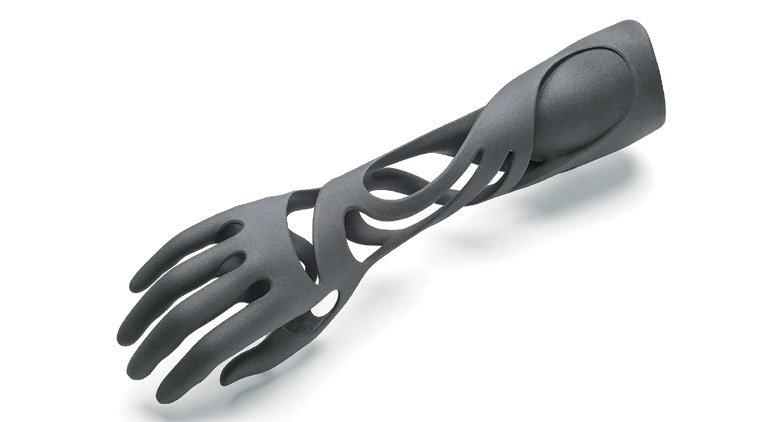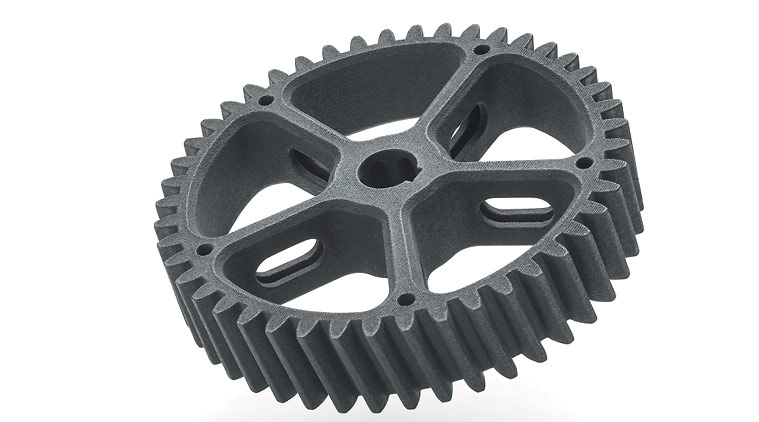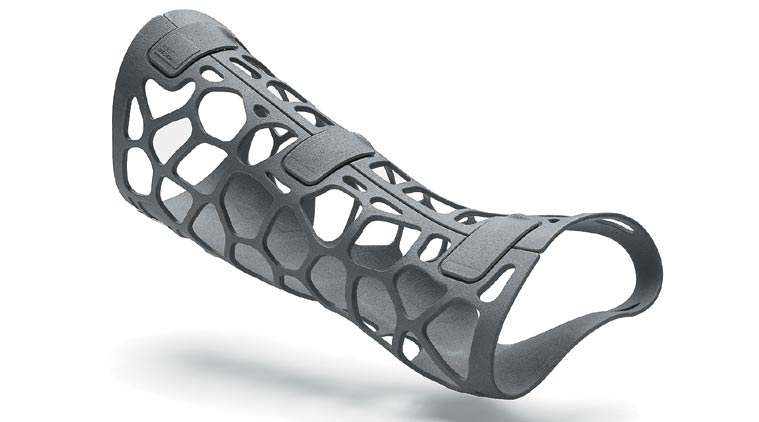- India
- International
Digital Manufacturing: Multi dimensions of 3D printing tech
It uses materials such as plastics and metals to convert products envisaged on computer-aided design to real three-dimensional items; commercial users have been its early adopters.
 A drone with 3D-printed parts (3D data courtesy of NACAR). Photo: HP
A drone with 3D-printed parts (3D data courtesy of NACAR). Photo: HP
A quick Google search on “3D printing in India” reverts back with a number of results pertaining to companies and websites offering 3D printing as a service offering 3D printed products such as machine prototypes, jewelery, objects of art such as sculptures, among many others. This is one of the markets that manufacturers of 3D printers aspire to capture. Technology giant HP Inc earlier this week added itself to a list of companies such as US-based Stratasys and Germany-based SLM Solutions selling 3D printers in India.
3D printing, also known as additive manufacturing, uses materials such as plastics and metals, to convert products envisaged on computer-aided design to real three-dimensional items. Companies expect that till the time the cost of 3D printers fall, leading to mass adoption, the customers using these digital manufacturing devices would be the ones producing goods lesser in quantity but that are high in value terms.
“One of the reasons why HP wanted to get into 3D printing is not for the current 3D printing market, but the overall opportunity to transform manufacturing. The size of manufacturing globally is $12 trillion, and half of that is in Asia. 3D printing traditionally has been used for prototyping. The opportunity is to start using 3D printing for production, other industrial application, spare parts and a variety of applications that can be driven,” HP’s director, Asia Pacific & Japan for 3D Printing Alex Lalumiere told The Indian Express in an interview.
 3D data courtesy of NACAR. Photo: HP
3D data courtesy of NACAR. Photo: HP
“Typically, products with higher value and lower volumes tend to be the market for 3D printing. What we’re trying to do is reduce the cost of production, so that more applications can be made available. It’s a bit like the adoption of PCs and mobile phones with the cost becoming affordable for everyone, same will happen with 3D printing, which will eventually become ubiquitous for people to use. The new generation of designers are actually being taught how to use 3D printing,” he added. HP launched its multi-jet fusion 3D printer range at Rs 2.50 crore, which includes pre and post processing unit, the printer and initial consumables. The cost is also inclusive of three-year maintenance and service contract.
Bengaluru-based Altem Technologies is a reseller of Stratasys in India and sells a variety of 3D printer options based on the polyjet technology. On its website, Altem Technologies says it also sells dental printers for use by medical labs for printing of products such as dental models, denture framework, surgical guides, wax models, veneer try-ins etc. “3D printers have been shown to reduce the labs’ labour costs. This is achieved both by saving technicians up to 50 per cent of their time in designing and manufacturing restorations, as well as reduced operational costs. For example, when prototyping, the average technician’s labour time is reduced from seven hours per case down to just 15 minutes — a 96 per cent time saving,” Altem claims.

 3D data courtesy of NACAR. Photo: HP
3D data courtesy of NACAR. Photo: HP
HP’s India Managing Director Sumeer Chandra pointed out that that one of the reseller partners of the company in the country for its 3D printers — Imaginarium — also operates as a bureau offering the service of designing and printing products or prototypes for potential users of 3D printing technology. He said that 3D printing would be an important part of the next wave of manufacturing growth.
“The next wave of manufacturing will be powered by new technologies such as cloud computing, AI, machine learning, and 3D printing is a very important part of that technology enablement — that’s one trend. The second trend is that within India, there is a big push to improve the share of manufacturing in GDP,” Chandra told this newspaper. Initially, HP would be targeting sectors such as automotive and automotive ancillaries, defence, healthcare, higher education, etc. Globally, 3D printed products are being increasingly used in the aerospace industry as well, where parts are high in value, but are produced in limited quantities making the 3D printing process efficient enough in terms of economies of scale.
However, both Chandra and Lalumiere underscored the fact that in the near term, 3D printing may not replace the traditional forms of manufacturing completely, considering the evolution of the existing technologies that has happened over decades is embedded deeply into the economics of manufacturing.
“3D printing, no matter how important it is, will not replace traditional manufacturing technologies such as injection moulding. In some of the applications it might, but in most cases, it will complement existing technologies. Commercial technologies like injection moulding are extremely precise – the economics of that solution have been squeezed out for decades — and it is an extremely efficient process. When we have high value customisation, when there are geometries that require a complex design that conventional technologies cannot achieve, then 3D printing is the right solution,” Lalumiere said.
 3D data courtesy of NACAR. Photo: HP
3D data courtesy of NACAR. Photo: HP
“There is a lot of value companies can create using 3D printing, but some parts are so basic that you really can’t create a lot of value, so those are unlikely to move to 3D printing. So companies will continue to assess and evaluate which parts are ideal for 3D printing not just from a cost perspective but also some of the adjacent benefits such as lower weight, lower transportation costs, inventory costs come down,” Chandra added.
A number of 3D printers sold in India currently also run into lakhs of rupees and are available as do-it-yourself kits asking the buyers to assemble the printers themselves. On account of factors such as these and the cost of printers, the technology hitherto has not trickled down to use for recreational purposes and commercial users have been its early adopters. Notably though, for commercial 3D printing, HP does not see skilling of personnel as a challenge for their products.
“Like any disruptive technology, there is always a certain amount of specialised skills that are required. I think, one of the key areas is around designing. Today, designers or engineers design with the knowledge of injection moulding constraints in mind. There’s obviously other requirements about how to operate the machine,” Lalumiere pointed out.
Chandra said that one of the opportunities for three-dimensional printing in India in a long-term could be in engineering services, where companies could help other firms globally in designing of products suited for 3D printing. “Any industrial services company today probably has a huge inventory running into hundreds of thousands of parts that they use in different products that they produce. They’ll have to review that to see what parts can be produced with a 3D printer,” he said.
More Tech
Apr 24: Latest News
- 01
- 02
- 03
- 04
- 05








































